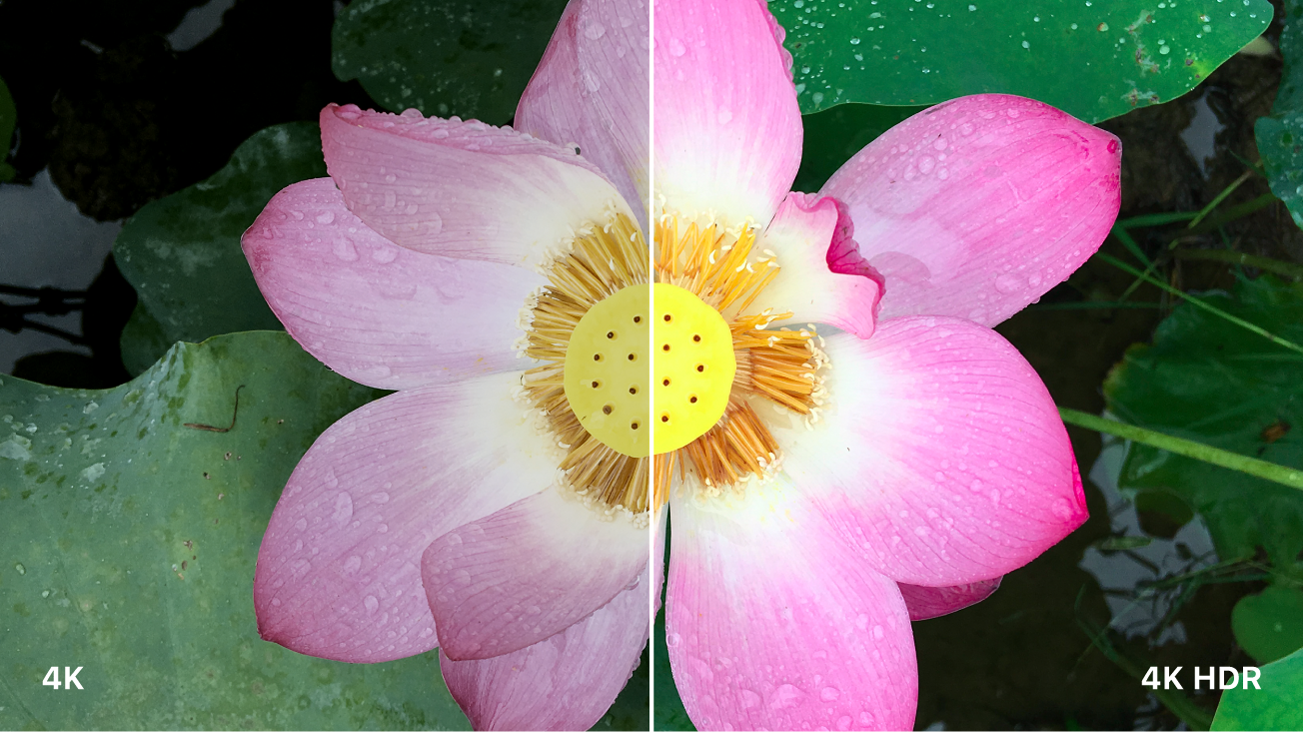
Intro to wide color gamut and HDR in Compressor
No image device is capable of capturing and reproducing the full spectrum of colors and levels of brightness visible to the human eye. Consequently, image devices record, edit, display, or output a subset of those colors and luminances. This range of reproducible color is known as the device’s color space or color gamut. See HDR and Wide Color Gamut in Final Cut Pro.
Standard-gamut versus wide-gamut color
Traditional computer monitors and HDTVs support a limited color space that’s based on a decades-old industry standard called Rec. 709. Rec. 709 devices (and the video content created for display on them) have standard-gamut color, the constrained color palette you see whenever you view a broadcast HDTV show, DVD, or Blu-ray disc.
A more recent generation of displays—including 4K televisions and computer displays, newer Mac, iOS, and iPadOS devices, and Apple TV 4K—can render a much wider palette of colors. These wide-gamut color devices display hues that are more vivid and lifelike (in addition to all the hues that standard-gamut devices can display). Accordingly, the video industry has adopted a wide-gamut color standard called Rec. 2020. Although most currently available wide-gamut devices support only a subset of the colors contained in the full Rec. 2020 specification, future imaging devices should be able to render more and more of those hues.
High dynamic range (HDR)
Additionally, some newer imaging devices can display extra levels of brightness in each color component (red, green, and blue) in a way that more closely reproduces how the human eye perceives contrast. These high-dynamic-range (HDR) displays have a much larger luminance range and typically process video at 10 bits per color component rather than at 8 bits. The larger luminance range and additional color data let HDR displays render more discrete steps from the minimum to maximum brightness value in each color, creating more realistic color transitions and revealing more detail in both shadows and highlights. Compressor lets you view HDR video in the preview window on a supported display.

Devices that combine wide-gamut color with 10-bit HDR capability can produce vibrant hues with nuanced shading, lending more realism and immediacy to an image, revealing more detail, and reducing artifacts like gradient “banding” (often seen in images of the sky as it transitions from lighter to darker areas.)
Several streaming content providers offer wide-color HDR video, including the iTunes Store, Netflix, and Amazon Video. The Ultra HD Blu-ray disc format also supports wide-color HDR video.
Wide-gamut color and HDR in Compressor
When you add a video file to Compressor for transcoding, the app identifies the source video’s native color space (and displays an SDR or HDR badge in the Job inspector). After you apply a transcode setting to the source file, you can modify that color space in the file you output. Depending on the transcode setting you apply, Compressor offers several common color space options—from standard gamut, to wide gamut, to wide-gamut HDR. For details, see Change video color space in Compressor.
Transcoding a standard-gamut video to a wide-gamut color space won’t improve the video’s appearance; the output video will look identical to the original because the wide-gamut color space is a superset of the standard-gamut color space, and the colors won’t be changed. Likewise, transcoding an 8-bit video to 10-bit HDR won’t change the video’s appearance because Compressor can’t create additional resolution that wasn’t there to begin with.
However, transcoding a wide-gamut video to a standard-gamut color space may result in a more faded-looking, drab image (because the wide-gamut colors will be discarded). And transcoding a 10-bit video to 8-bit color will result in reduced resolution and potential banding in areas of the image with color gradients.
Download this guide: PDF